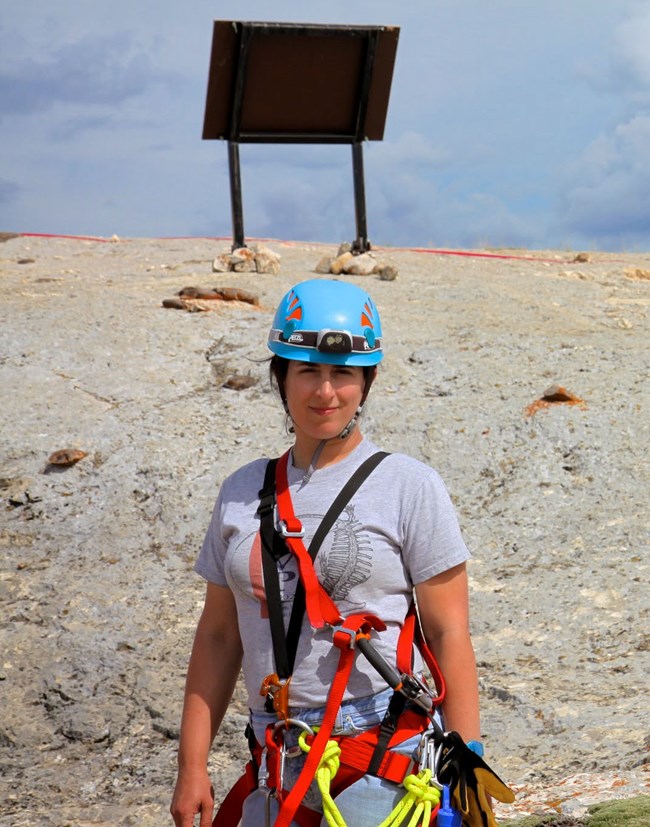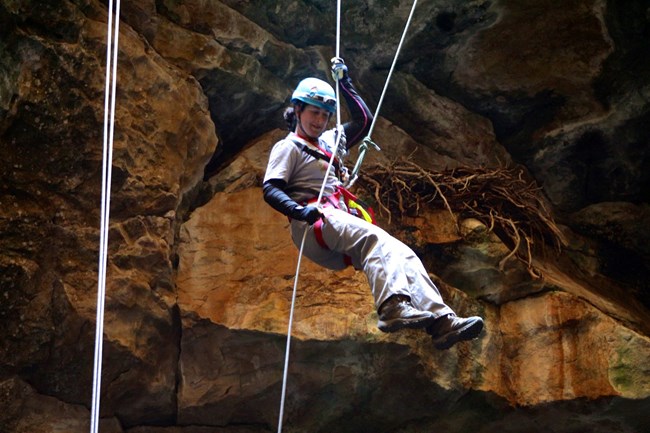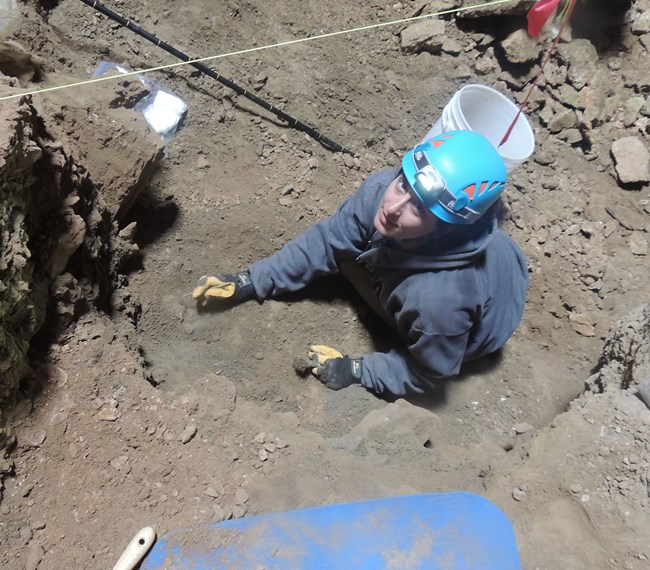Part of a series of articles titled Meet A Paleontologist.
Article
Julie Meachen, Des Moines University

Please describe the type of work you do in paleontology:
I am a functional morphologist and a paleoecologist. I use the skeletons of living animals to figure out what extinct animals did for a living, for example, how they got their food, how they moved around and other behaviors. I also use animal fossils to figure out what past environments were like.
What are you working on now?
I am current working with two fossil sites, both from the Ice Age. One is a cave in northern Wyoming called Natural Trap Cave when Ice Aged animals fell to their death 12,000 years ago. The other site is an ice age trap site called the Rancho La Brea Tar Pits in Los Angeles. I work on the huge number of carnivore fossils that have been found there to figure out how they used to live.

Where did you go to school? What were some of your favorite classes?
I did my bachelors and my masters degrees at the University of Florida and my Ph.D. at UCLA. My favorite classes were always about animals. I really enjoyed anatomy, mammalogy, and vertebrate paleontology. When I was in high school the science classes were always my favorites. I liked biology, anatomy and chemistry the best.
Was there an experience you had that made you realize you wanted to be a paleontologist?
I didn’t realize I wanted to be a paleontologist until I was in college. I volunteered in the vertebrate paleontology collection in my sophomore year and as soon as I pulled open the drawers in the collection and looked inside, I was sold for life.

What was your most memorable experience working with fossils?
The first big dig I went on was to a place in Florida called Haile 7C. It was a phosphate quarry where a bunch of workers uncovered huge extinct mammals. It was at this quarry that I uncovered a giant ground sloth – the largest found yet – that was a new species. It was a very exhilarating moment.
Do you have any advice for aspiring paleontologist?
No matter which path you take to being a paleontologist, make sure you study anatomy. Most paleontologists that are successful at getting a job
Last updated: April 22, 2020
